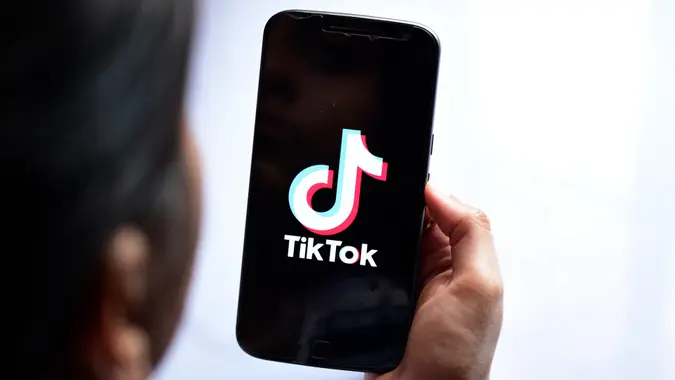How Millennials Can Invest While Managing Student Loans

Commitment to Our Readers
GOBankingRates' editorial team is committed to bringing you unbiased reviews and information. We use data-driven methodologies to evaluate financial products and services - our reviews and ratings are not influenced by advertisers. You can read more about our editorial guidelines and our products and services review methodology.

20 Years
Helping You Live Richer

Reviewed
by Experts

Trusted by
Millions of Readers
The student loan payment pause is rapidly coming to an end, and the first due date is set for October.
According to a recent TransUnion study, 47% of millennials will have loan payments that are less than $200, while 20% of this age group will have payments of more than $500.
Investing might seem tough when you have student loans to pay. But even with an extra bill to pay every month, it’s still possible to save and grow your money.
Here’s how to make the most of your money — even with student loans in the picture.
Pay Yourself First
When you pay yourself first, you prioritize setting aside a certain amount of money each month from your paycheck before you do anything else. In this case, it would be to invest.
“For the working millennial that feels they do not have enough money to invest because of student loans being due again, I say change your mindset,” said Jim Penna, senior manager of retirement services and investment strategy at VectorVest Inc.
“I know it is not easy, but create a budget that allows you to pay yourself first. Then budget the rest of your money as needed to pay your student loans and monthly expenses.”
Participate in 401(k) Employer Matching
“One of the most important financial decisions anyone makes in their life is the decision to participate in an employer sponsored retirement plan,” said Robert R. Johnson, Ph.D., CFA, CAIA, professor of finance at Heider College of Business at Creighton University.
“Perhaps the worst financial mistake anyone can make is turning down free money. If one does not contribute enough in a 401(k) plan that has a company match to earn that match, one is basically turning down free money.
“Many people put such a high priority on paying down debt that they do not participate in their company 401(k) plan. Contributing the max to your 401(k) also reduces your tax bill. People should do whatever it takes to participate in their company’s 401(k) plan to the level to get the full employer match.”
Contribute to a Roth IRA
If your employer doesn’t offer 401(k) matching, Penna said, consider contributing to a Roth IRA.
“The Roth IRA allows you to fund it with after-tax dollars and allow your profits to grow tax free, meaning qualified withdrawals are tax free as well,” he said.
A Roth IRA stands out for the following reasons:
- Tax-free withdrawals: You pay up front and, in return, your future withdrawals are tax free.
- No age limit on contributions: As long as you earn, you can contribute.
- No mandatory distributions: You decide when to withdraw without age-related pressures.
- Penalty-free emergency withdrawals: Contributions can be withdrawn penalty free for emergencies.
- Beneficial for heirs: Funds remain tax free for beneficiaries.
Invest in an S&P 500 Index Fund
“As for the types of investments for millennials who have time to build their retirement savings, I would recommend considering a quality S&P 500 index,” Penna said. “The Vanguard S&P 500 ETF (VOO) is one example.”
The SPDR S&P 500 ETF (SPY), but it has a higher expense ratio.
Automate Investments
Johnson said it’s a wise approach to make your retirement and savings contributions automatic.
“People should try and automate as many financial decisions as they can,” he said. “One must make saving money a habit. And habits — good or bad — develop over time.
“For instance, have an amount taken out of each paycheck and put directly into an investment fund — most appropriately a low-cost stock index fund. This strategy means you will be putting money into the market whether stocks are rising, falling or treading water. You will practice dollar cost averaging and build significant wealth over the long run.”
Keep a Long-Term Outlook for Best Results
Penna said he advises millennials to keep a long-term outlook on their investments.
“Don’t let short-term market volatility and fluctuations alter your long-term goals and objectives,” he said. “Take the time and create a plan and stick to it. You will be glad you did!”
 Written by
Written by  Edited by
Edited by 

























